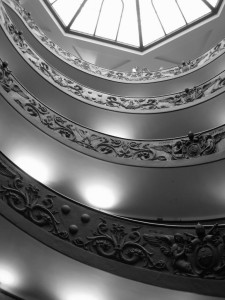VAT Grouping
This is a very concise summary of matters that should be considered when deciding to form or disband a VAT. Grouping is optional although HMRC have powers to refuse an application in any case where it is necessary for the protection of the revenue.
What is a VAT group?
VAT grouping is a facilitation measure by which two or more entities can be treated as a single taxable person (a single VAT registration) for VAT purposes. The measure was once restricted to “Bodies Corporate” which includes; companies of all types and limited liability partnerships. However, from 1 November 2019, grouping is additionally available for all entities, including; partnerships, sole traders and Trusts in certain cases.
It is important to recognise the difference between a corporate group and a VAT group – these are two different things and it should not be assumed that a corporate group is automatically a VAT group.
It is worth remembering that it is possible to VAT group where no taxable supplies are made outside the group.
Pros
- only one VAT return per quarter – less administration
- the representative member accounts for any tax due on supplies made by the group to third parties outside the group. This is particularly helpful if accounting is centralised
- no VAT on supplies between VAT group members. No need to invoice etc or recognise supplies on VAT returns
- usually improves the partial exemption position if exempt supplies are made between group companies
- may improve input tax recovery if taxable supplies are made to a partly exempt group company
- if assets are hived up or down into a group company before a company sale to a non-grouped third party, the VAT consequences of the intra-group movement may be ignored
- may provide useful planning opportunities/convenience at a later date
- sales invoices issued, or purchase invoices received, in the wrong company name would not require time-consuming amendment
- there may be cashflow benefits in respect of intra-group charges
- reduced chance of penalties on intra-group charges
Cons
- all members of the group are jointly and severally liable for any VAT due
- former VAT group members are also liable for any VAT debts due during the period of VAT group membership
- only one partial exemption de-minimis limit for group – which decreases the ability to fully recover input tax
- obtaining all relevant data to complete one return may take time thus possibly missing filing deadlines
- a new VAT number is issued (previous ones are cancelled – which may lead to administration etc issues)
- the representative member needs all of the necessary information to submit a VAT return for the group by the due date
- via anti-avoidance provisions, assessments can be raised on the representative member relating to earlier periods when it was not the representative member and even when it was not a member of the group at that time
- the limit for voluntary disclosures of errors on past returns applies to the group as a whole (rather than each company having its own limit)
- the payments on account (POA) limits apply to the group as a whole. This applies to a business whose VAT liability is more than £2 million pa. This adversely affects a business’s cashflow
- the cash accounting limit of £1,350,000 applies to the group as a whole (rather than each company having its own limit)
- Transfers of Going Concerns (TOGCs) acquired by a partly exempt VAT group may result in an irrecoverable VAT charge as a result of a deemed self-supply
- an option to tax made by a VAT group member is binding on all present and future members of the VAT group. This is so even after a company has left the VAT group
We strongly recommend that professional advice is taken when a business is either considering forming a VAT group, or when thought is being given to disbanding one. Making the wrong decision could be very expensive indeed. Specific matters that dictate VAT advice are when:
- property is involved
- intercompany charges are made
- TOGCs are involved
- costs in respect of restructuring are incurred (a current hot potato in the courts)
- there is an international aspect to a group
- a reverse charge applies
- a company has been involved in the penalty regime
- companies become insolvent
- a VAT group is subject to POA
- a company, or the VAT group, makes exempt supplies.
We are always happy to advise when required.

